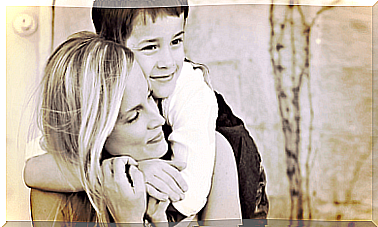Mindfulness, The Art Of Being In The Now

Do you know mindfulness? In eastern societies the practice of meditation has been common for thousands of years. This discipline aimed at finding a spiritual balance began to enter the West in the 1970s.
Mindfulness, also called mindfulness or mindfulness, is one of the practical applications of meditation, used in psychology for its benefits to deal with problems of stress, anxiety and depression.
What exactly is mindfulness?
To understand this practice, we have to contextualize it in its Buddhist roots. In general terms, this philosophy considers life as a set of pleasant and unpleasant sensations and teaches that it is attachment, trying to remain in pleasant states or avoid uncomfortable ones, that causes us suffering.
As a consequence, the solution to suffering would be to try to embrace life as it is, accepting both the good and the bad, so that this acceptance frees us from tensions and thus brings us closer to a state of calm.

To achieve these states, different forms of meditation are practiced in eastern cultures. Mindfulness is a branch of meditation, which in the West has been adapted as a way to enhance states of relaxation that help solve problems of anxiety, stress and even depression.
In practice, it consists of, staying still, directing attention to the breath, concentrating on it, and accepting each of the sensations and thoughts that appear to us when we are still and concentrated, noting them mentally but letting them go without doing anything about it. .
How do I apply this in my daily life?
While the strictest practice of mindfulness would be to practice these breathing exercises daily for about 40 minutes, there is a way to practice mindfulness in daily life that also has psychological benefits. We explain how through an example:
Imagine that you are having breakfast. The usual thing is that, while we do it, we are thinking about a thousand things: what awaits us at work, the shopping list, the discussion we had yesterday with our partner … Sometimes, we even do two things at the same time: have breakfast and read the newspaper or chat on your mobile …
To put mindfulness into practice we have to pay full attention to what we are doing in the present, in this case, having breakfast. You can do it by following these instructions:
- Decide that, in the space of time that you propose, you will only live the experience of having breakfast uniquely and fully, without distractions.
- Once alone, in front of coffee and toast (or tea or whatever you like), become aware of what thoughts you have that do not have to do with the act of eating breakfast. The thoughts are written down mentally and accepted, but it is a question of not “getting tangled” in them, but returning to the consciousness of breakfast.
- Focus on the experience of the senses, directing your attention to the flavors, the texture of what you eat, the room temperature, even if your head hurts, but without judgment. That is, it is not about thinking if it is hot or not, but about taking a mental note of reality as it is perceived by our senses. Be aware without judging. Breathe slowly and without haste.
This can be applied in any practice of daily life : while you shower, while cooking, while driving, at work …
With practice, you will be able to direct your mindfulness to the present in increasingly uncomfortable situations without the need to judge; for example, in a traffic jam, in the queue of the doctor …

What are the benefits of mindfulness?
There are scientific studies that show that the practice of mindfulness reduces levels of stress, anxiety and helps to deal with depression.
The reason is that a good part of the causes of these ailments has to do with the fact that our mind is oriented towards the past (to regret, feel nostalgia, think “what would have happened if…”) or towards the future (to worry about it or yearning to be in a hypothetical future, thus despising the present).
Mindfulness focuses on training our mind to stay in the present, which results in us feeling less regret, frustration or expectations, which are three of the foundations of anxiety or depression.
When we train ourselves to be in the now, not only in the positive part (the pleasure of the taste of toast), but accepting the negative (the insufferable summer heat), we discover a serenity that has always been within us and that we helps to face the obstacles and discomforts of life from a place of inner peace.









